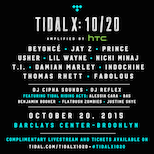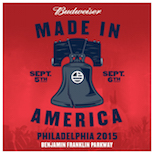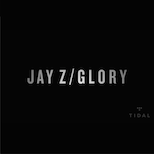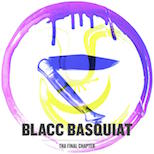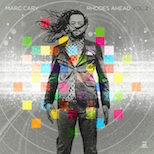Karriem Riggins: All That Jazz
01.15.2013
MUSIC
It’s not rare for jazz and hip-hop artists to collaborate. The intersection between the two has been a well-travelled path; from Pete Rock to A Tribe Called Quest and countless other examples, the genres have long shared fruitful exchanges. However, it’s not often that you find someone who has the ability to operate autonomously on both sides though, but Karriem Riggins, doubling as a jazz drummer and hip-hop producer, has made it happen. His debut album, Alone Together – released in October of last year – showcasing more of his hip-hop side, has received recognition on several “Best Of 2012” lists lately and rightfully so. J. Dilla’s Donuts album was a masterpiece and will stand the test of time, no doubt, but Riggins’ joint has the potential to be mentioned in the breath and many have already begun to draw that prestigious comparison.
Even if you haven’t heard of Riggins before, you’ve definitely heard him. The Detroit native has production credits for Slum Village, Erykah Badu, Madlib, The Roots, Common and others, and has collaborated as a drummer with top jazz musicians including Donald Byrd, Roy Hargrove, Bobby Hutcherson. Riggins is pretty well-versed.
“One thing about my music,” he says, “I have a sound but I don’t think I have a style in my music because I go so many directions. I think people can get that from listening to my album and a lot of the work I’ve done with some artists.”
Life+Times caught up with the drummer-producer to talk about his highly acclaimed album, finding success in jazz and hip-hop and more.
Life+Times: Talk about the creative process for Alone Together and the response that it’s gotten.
Karriem Riggins: The creative process was like, every song was different. A lot of the songs that I made in the studio, and a majority of the music I made on tour – on tour buses, some on airplanes. Some start off by a sample and build around that sample, a lot of it is chopped-oriented. It’s different for every song, but I think it’s all music. Being on tour and listening to a lot of music inspired me to create the music. It’s been getting a lot of love, and to make a project and get this type of response is a blessing. You put the music out there, and I’m just trying to push good energy out to the universe, so to receive that back is a blessing. A lot of people have been reaching out for beats and a lot of people have actually been wanting to cut songs to some of the music on the album. It’s a beautiful experience.
L+T: People are comparing your album to J. Dilla’s Donuts already. Talk about some of your work with him and that comparison.
KR: J. Dilla was a big influence, early on when I first met him, it was around the time I had just purchased my drum machine, the MPC3000. I went over to his basement with Common, that’s how I initially met him. I saw how he developed his beats, how he chopped and everything and that inspired me to go the route that I did beat-making wise. Being around him – there’s not a lot of producers that show love to other producers – and I’ve been blessed to be around cats that have a lot of love for each other. Dilla used to give me records, drum sounds, a lot of different inspirational things. To be compared to him, I think that’s a blessing, but Dilla is in his own lane and the music will always be there, and it’s a classic so we’ll let classics be. Donuts is a classic album and I don’t think that there have been many beat albums that are still around today that people listen to. People go to Donuts as an inspirational piece, so hopefully Alone Together will be around and people can reference it later on in life. I really wanted to create music that was close to my heart, that really meant something to me.
L+T: Do you have a favorite record on the album?
KR: The ones that I made with my son around were just so much fun. To have him adding handclaps and he even named a couple of them. The “Ding Dong Bells” was his title. “daoooh,” that’s one of his favorites and he added claps to that one as well. “Stadium Rock” is his favorite. He’s six. He wasn’t on the machine, he was just adding handclaps and different percussion type of things. But he can make beats and they sound pretty decent, he has an ear for music.
L+T: How does your jazz background help you or change your approach when it comes to hip-hop production?
KR: I don’t know if it changes the approach, I just think my ears are wider. I hear a lot of different [things]. Sometimes I think it can be a double-edged sword because you may want to add something or jazz it up too much, you know. But when you’re doing hip-hop it’s about the simplicity, it’s about keeping it funky and it’s very rugged sometimes. Sometimes jazz can be rugged, but sometimes it’s polished. Being able to approach each genre of music in its own way is something that I’m still working on, it’s a work in progress, but I like to be able to articulate myself in each genre in a different way.
L+T: Is there a difference working as a hip-hop producer and working with a rapper, than working as a jazz artist and collaborating with R&B artists or other musicians?
KR: I don’t think so. I think it’s all in being on the same path, the same direction, creating a backdrop, a musical foundation that people can feel in their heart. Being a producer, I think it’s important to learn what type of music the artist likes, what makes them want to work and what inspires them. I think that’s a good way to learn them and create music for them. And in jazz, it’s the same thing. Like Roy Hargrove, I know he loves Art Blakey and Elvin Jones, certain sounds he’s coming out of I knew to learn from those drummers. That’s what takes music to the next level. Listening and learning that’s all it is.
L+T: Roy Hargrove mentioned that you used to play with him a few years back. He kind of helped bring you in the game?
KR: Yeah, Roy is about five years older than me, and I joined his band when I was, I want to say 20 years old. I had been living in New York for about a year-and-a-half, and I had met him when I was still in high school, so I’d been following his band since I was 15 or 16. So I had always been a fan of his music, and to be able to join his band and interpret his music from my perspective was like a dream come true.
L+T: You went to New York to play straight out of high school, almost like how ballplayers would go straight from high school to the pros. How was that transition for you?
KR: I don’t really consider it going to the pros. I played with pros and I think that was my schooling. Being able to play with Roy’s band after following Greg Hutcherson, his drummer that played previous to me, I learned a lot from Greg and he helped me along the way. Being in New York City, being able to hear Elvin Jones and Roy Haynes, all the drummers from the bebop generation, that was school. I learned so much about the business. I think being in New York is important for a musician who wants to pursuit jazz because there’s so many other young musicians doing the same thing and you learn where you’re at musically. It’s inspirational to see other cats playing at high levels. That was like school for me. Going to college is important for a lot of people and if you feel that you need to go that route that’s important. But New York is the mecca and that’s where the wealth of knowledge is in music.
L+T: What is it about Detroit that makes it such a soulful city? It’s like there’s something in the water.
KR: That’s right, and still currently there’s so many bad cats right here today. I think growing up here and being influenced by all the music, it’s just the ancestors, you know, Motown. You feel all of the energy from our ancestors here. It’s a spirit that still dwells. If you’re from here, people know when you’re from Detroit. I think musically it’s important for us to do our job to learn as much as we can about music and to practice. It’s something here that is nowhere else and I think people will agree when they hear music that’s from Detroit – producers, singers, rappers, whatever – it’s an important city for music. If not, the most important.
L+T: Being from Detroit, what were some of the things you found digging in your parents’ crates that really stuck with you?
KR: Definitely. My dad had a lot of the Steamin’ With Miles Davis albums, I had all of those on wax. I listen to those everyday. [Miles Davis‘] Kind Of Blue, McCoy Tyner‘s Fly With The Wind, and John Coltrane‘s A Love Supreme. I actually have all the wax from back then, it’s really roughed up. My mom had a lot of R&B stuff, like Earth, Wind and Fire, gospel stuff like Andraé Crouch, a lot of soulful records. My grandmother had a lot of 45’s in the house. James Brown, The Moments, a lot of stuff like that.
L+T: Looking at music today, does it compare to those records that you just named? What’s different if it doesn’t?
KR: Nothing compares to it because it’s sonically a whole different way of creating music. I think nowadays people still put their heart and soul into the music, but it’s just a different approach. I hear great stuff today. I love Flying Lotus‘ music, he’s very soulful, Pete Rock, Madlib, Common, D’Angelo. Hearing D’Angelo inspired me, it brings you the same soulful type of feeling, it’s inspirational, but it’s sonically different from the music that was created in the past. That’s how we evolve and keep pushing forward to the future, and those are the artists that I like to listen, cats that are really innovative.
